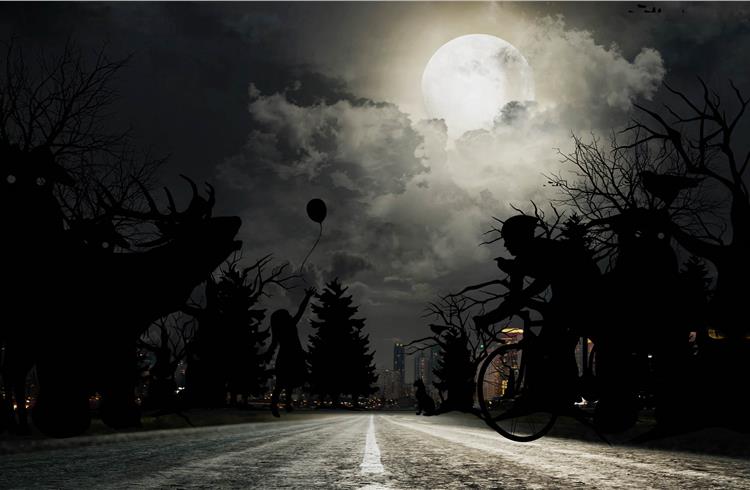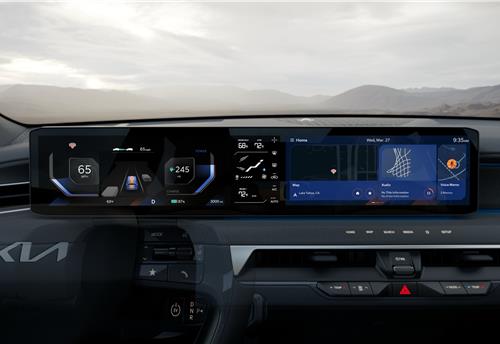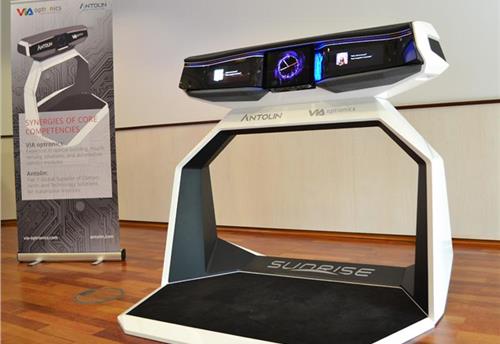Scared of the dark? Blame it on our cavemen ancestors, say poll findings
Some experts believe fear of the dark, or nyctophobia, can be traced back to our cave-dwelling ancestors, who were more at risk of being attacked by predators in the dark. Today it affects us behind the wheel.
It’s not just children who are afraid of the dark. Whether preferring to sleep with a light on – or worrying about driving at night – grown-ups get scared too.
Some experts believe fear of the dark, or nyctophobia, can be traced back to our cave-dwelling ancestors, who were more at risk of being attacked by predators in the dark. Today it affects us behind the wheel.
Worries over night blindness, and fear of hitting someone – or something – top a new poll of night-time driving fears, commissioned by Ford in Europe.
The poll conducted by Opinion Matters from a sample of 5,030 drivers in Germany, France, Italy, Spain and the UK. And for the latter at least, there is now a solution that goes beyond simply eating more carrots. The American carmaker is for the first time introducing new technology that is designed to detect pedestrians at night and then automatically apply the brakes if the driver does not respond to initial warnings.
“We know some drivers find hitting the road at night a stressful experience. Especially driving in towns and cities, pedestrians – sometimes distracted by mobiles – can without warning step into the road, leaving even alert drivers very little time to avoid an accident,” said Gregor Allexi, active safety engineer, Ford of Europe. “Day and night, Pedestrian Detection is designed to help identify people already in – or about to step into – the road ahead.”
Of thousands of drivers surveyed across Europe, 81 percent admit to being scared on the roads at night, rising to 87 per cent for women. More than half say poor night vision is a source of stress, and more than a third worry they might be involved in an accident. Fears that they may hit a pedestrian were highlighted by one in five drivers surveyed.
In 2014, across Europe, more than 1 in 5 road fatalities were pedestrians, almost half of whom died following accidents that occurred after dark. For the improved Pedestrian Detection technology, now able to work at night for the first time, the development team worked at night, sending life-sized dummies into the path of vehicles on closed tracks, and testing the system on public roads in busy cities including Paris and Amsterdam
How Pedestrian Detection works
Pedestrian Detection processes information from a radar located in the bumper, and a windshield‑mounted camera; while a database of ‘pedestrian shapes’ enables the system to distinguish people from objects such as trees and road signs. The camera delivers more than 30 snapshots every second – faster than a cinema projector. The video live-feed and wide viewing angle enables the system to pick out pedestrians, even in low-light conditions, illuminated only by the headlights.
If the system detects an imminent collision with a pedestrian, it first provides audible and visual warnings to the driver. Should the driver not respond, the system automatically applies the brakes.
With the advent of self-driving cars, of course, travelling at night will become easier. Last year a Ford Fusion Hybrid autonomous research vehicle with no headlights drove in pitch black at the company’s Ford Arizona Proving Ground, as part of the company’s journey to delivering fully autonomous vehicles to customers around the globe.
TIPS FOR DRIVING AT NIGHT
Here are a few ways to make driving at night easier:
- Ensure windows and mirrors are clean and free of ice and condensation
- Clean all exterior lights and check they work, keep spare bulbs in the car
- On unlit roads, put headlights on full beam and dip them on seeing oncoming vehicles
- Don’t drive tired or for more than two hours without a break
- Schedule regular optician appointments to check your vision
RELATED ARTICLES
Marelli Talbros Chassis Systems wins Rs 1,000 crore business from European OEM
The order, to be executed over an eight-year period, is for the supply suspension arms tailored for both conventional in...
Kia launches customised NBA display themes for North American market
Display Themes is a customised service that supports a personalised vehicle experience, allowing users to customise the ...
Antolin and VIA Optronics unveil versatile vehicle cockpit concept
The Sunrise vehicle concept cockpit, which is engineered for seamless transitions between manual and autonomous driving ...





 By Autocar Pro News Desk
By Autocar Pro News Desk
 25 Mar 2017
25 Mar 2017
 4968 Views
4968 Views









